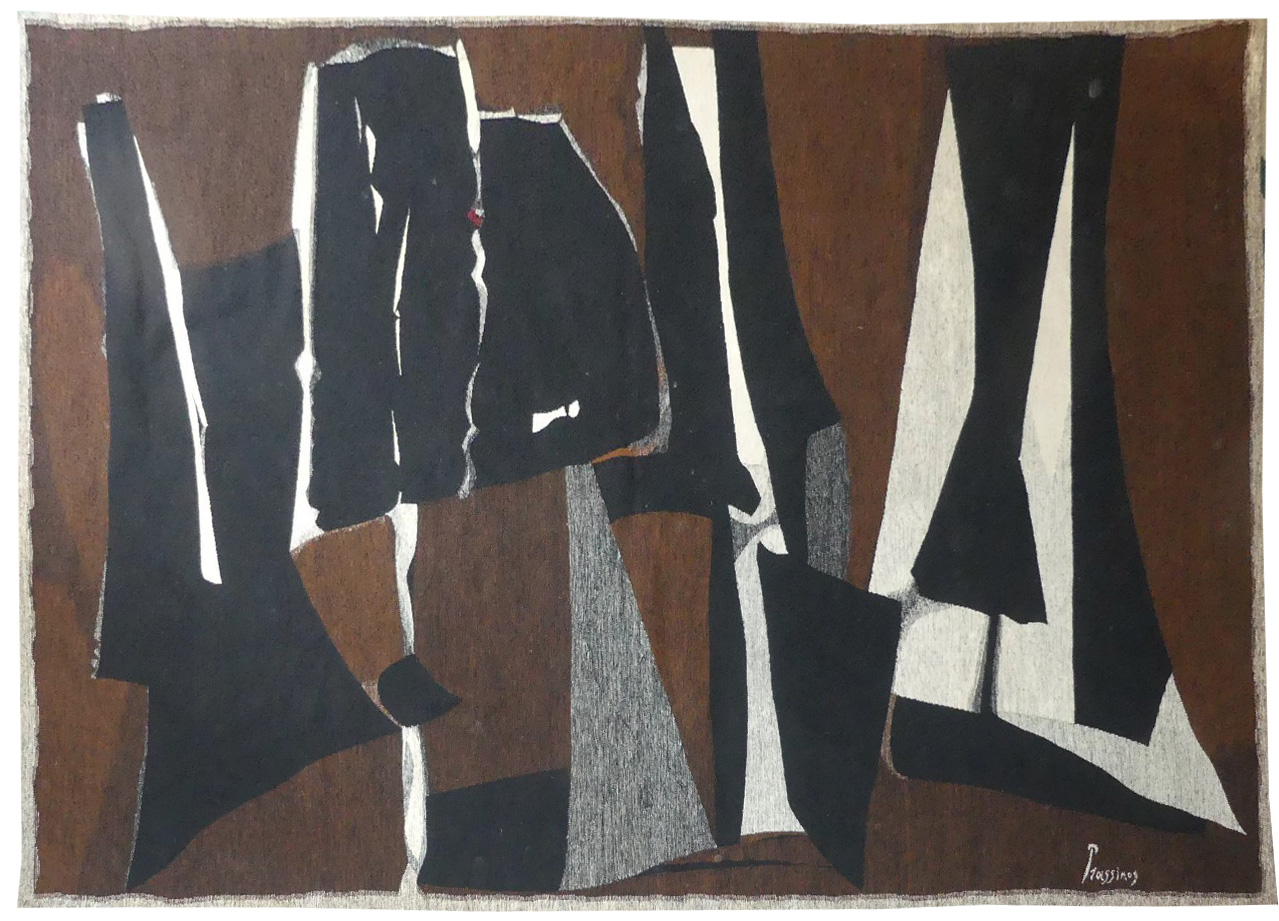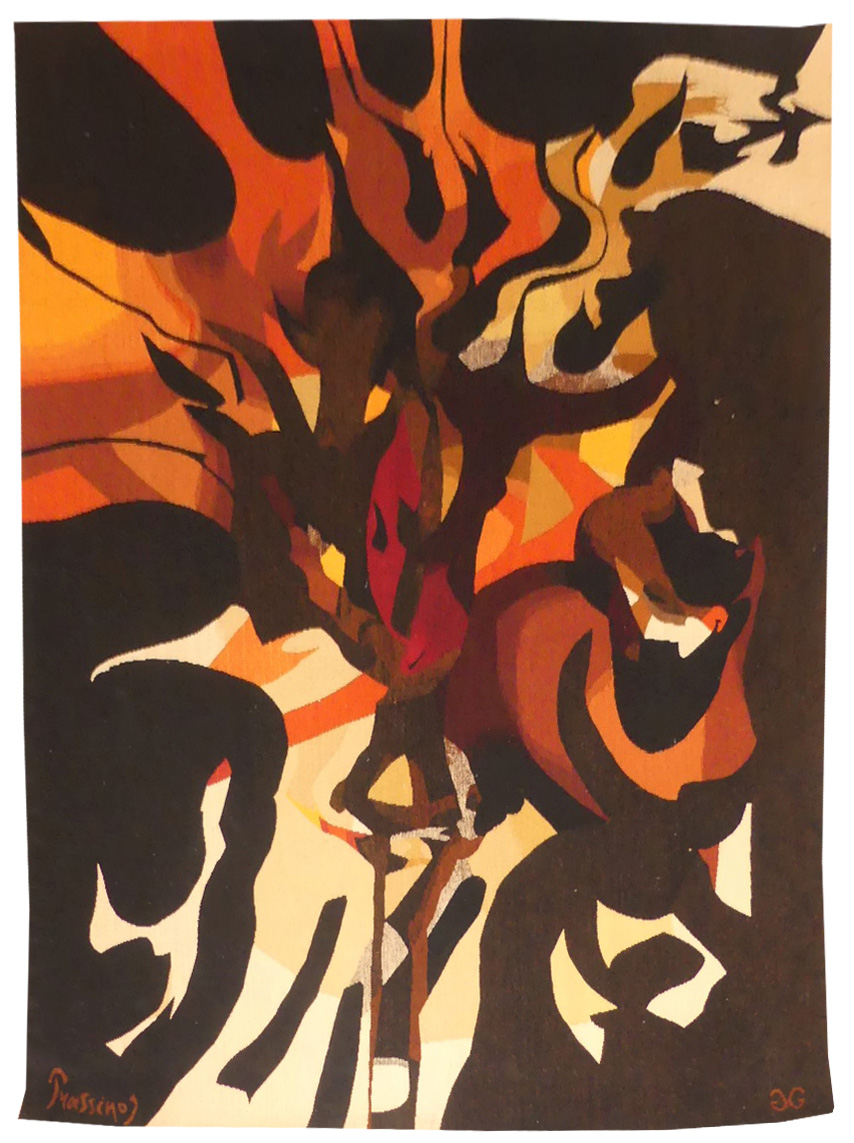Les six cyprès (the six cypresses)
Aubusson tapestry woven in the Goubely workshop.
With signed label.
1957.
I became interested in the art of tapestry particularly because I was excited by the numbered cartoon technique consisting of the fabrication of a mental coloured image using a code…. Tapestry is an essential exercise. As I practised it, it is perhaps the desire to interrogate, down to the finest detail, a work which exists in two dimensions.” (quoted in the exhibition catalogue, Prassinos, rétrospective de l’oeuvre peint et dessiné, Puyricard, 1983). So much for the artist’s manifesto. Prassinos designed his first cartoons in 1951 (most of which, around 150, would be woven in the Goubely workshop); then he joined the A.P.C.T. (Association des Peintres-Cartonniers de Tapisserie). After several cartoons taking birds as their theme, Prassinos, like several other artists, despite being close to Lurçat, (Matégot, Wogensky…) turned resolutely towards abstraction, in a very personal style where sinuous shapes entwine in contrasting colours (often following a scheme of black-red-brown-beige).
Prassinos moved to Eygalières in 1951 and his first tapestries were designed at the same period : « Cyprès noir » and « Cyprès rouge », both from 1952, number among his very first cartoons, echoing the simultaneous discovery of a locality and a technique. Here the subject is revisited on a larger scale ; one of the 3 originals is in the possession of the Musée Municipal d’Arnhem.
Bibliography :
Exhibition Catalogue Mario Prassinos, œuvre tissé, Galerie la Demeure, 1961, ill. p.20-21
Exhibition catalogue Mario Prassinos, tapisseries monumentales, Abbaye de Montmajour, Arles, 1974
Mario Prassinos, œuvre tissé, La Demeure, 1974, n°20
Exhibition catalogue Mario Prassinos, Tapisseries , Aubusson, Musée départemental de le Tapisserie, 1984
Exhibition catalogue Prassinos, Tapisseries, Angers, Musée Jean Lurçat et de la Tapisserie Contemporaine, 1988




